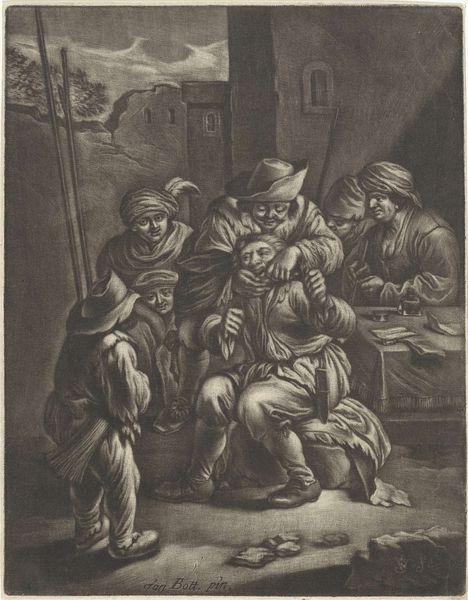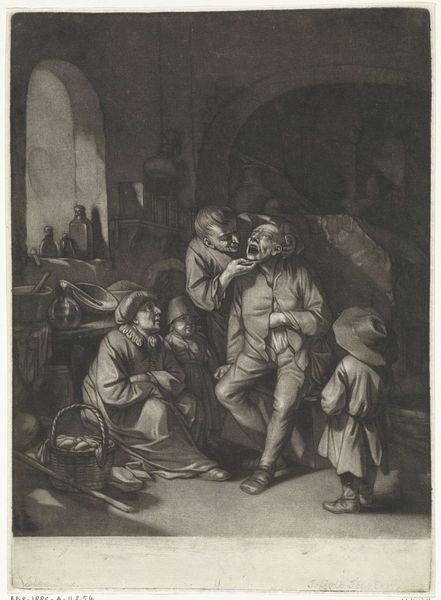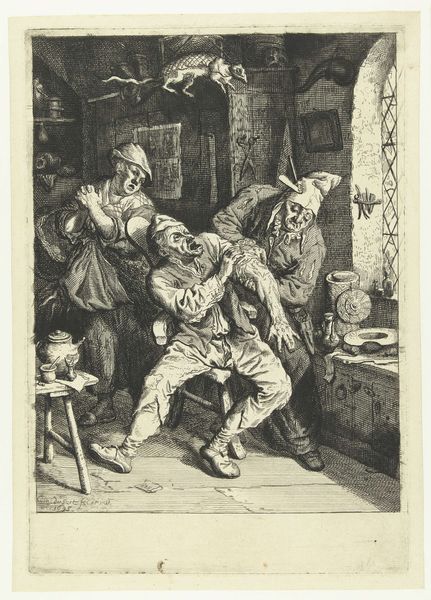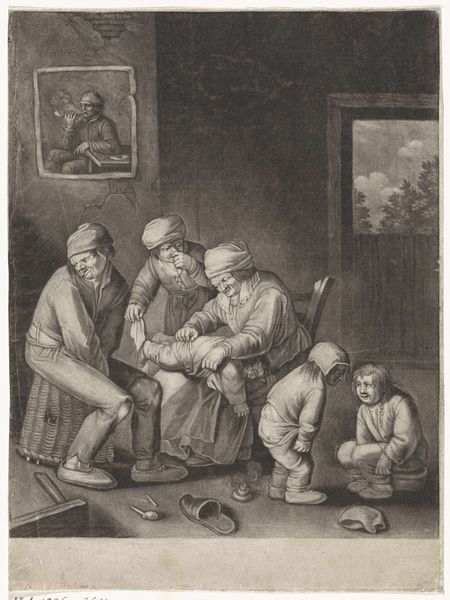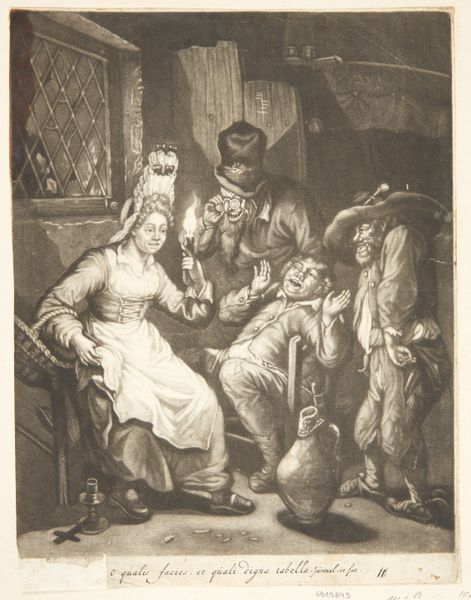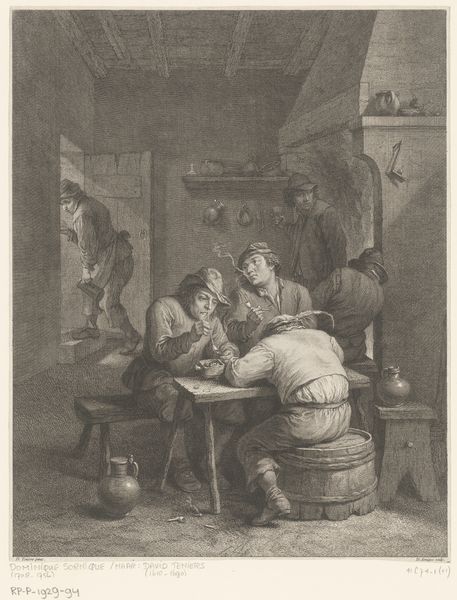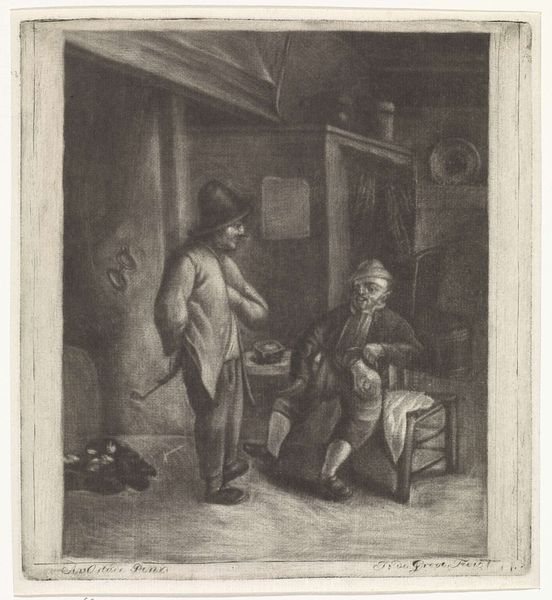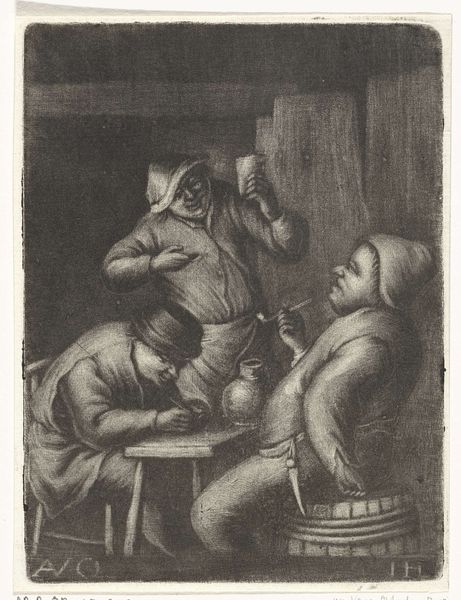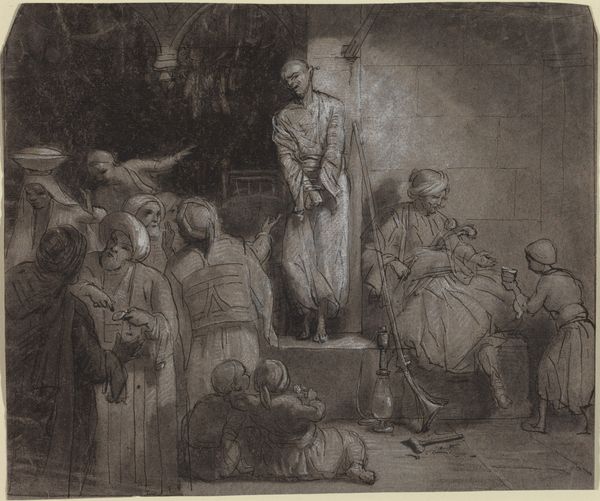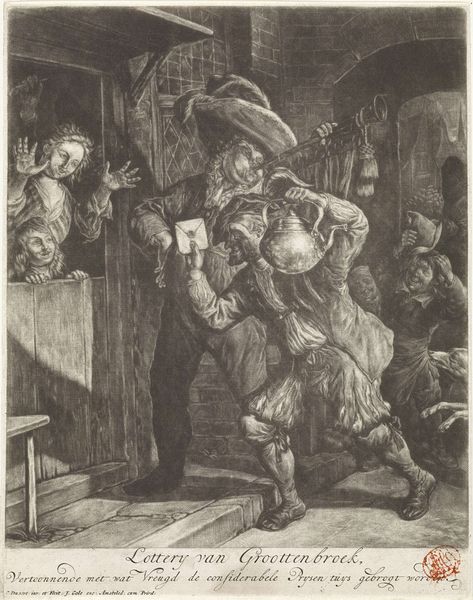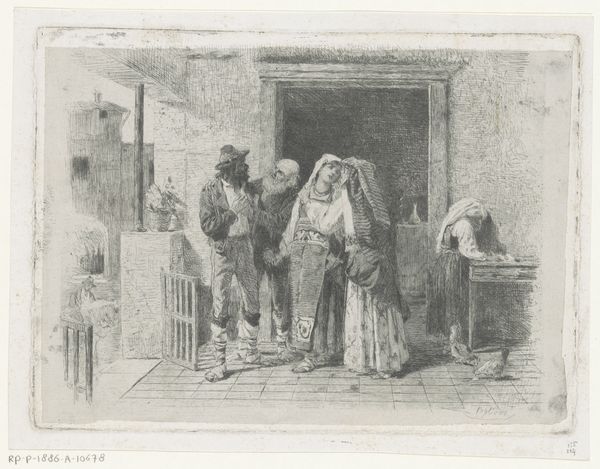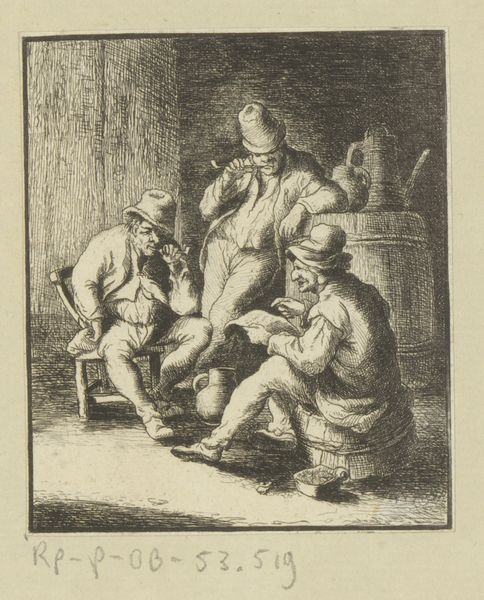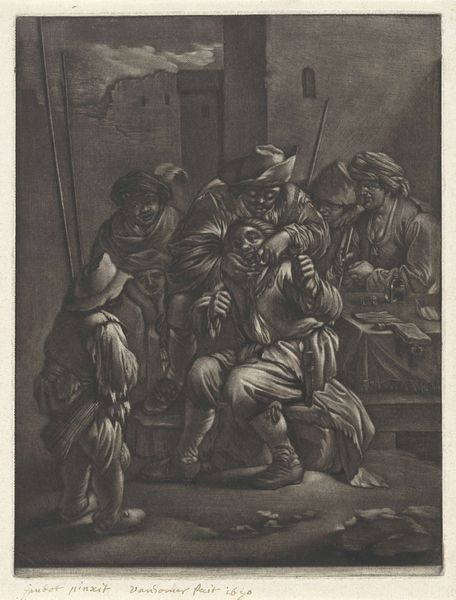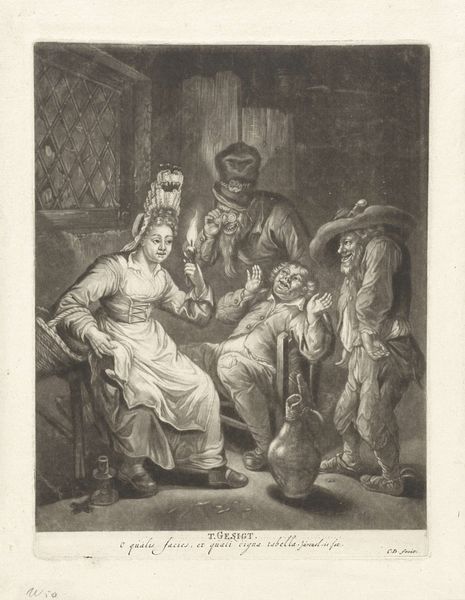
Don Quixote and Sancho Panza Entertained by Basil and Quiteria 1863
0:00
0:00
Dimensions: 36 1/4 x 28 3/4 in. (92.1 x 73 cm)
Copyright: Public Domain
Curator: Gustave Doré painted this narrative scene in 1863. The title? "Don Quixote and Sancho Panza Entertained by Basil and Quiteria." It’s oil on canvas. I’m drawn to the intricate details he’s included from Cervantes’s famous novel. Editor: My first impression? A strange mix of warmth and… melancholy. The lighting suggests a cozy interior, yet there’s a somber tone in the figures' faces, and I find it unsettling, but perhaps inviting, despite my initial unease. Curator: Absolutely. Doré was known for capturing heightened emotional states, a trademark of the Romantic style. The figures here aren't simply posing, they're conveying very specific feelings. Basil and Quiteria’s tale involves deception, performance, even a mock suicide to manipulate Quiteria’s father. Don Quixote, ever the idealist, witnesses all this playacting. Editor: And that playacting becomes a form of social commentary. Consider the implications for Quiteria, forced to play along in a patriarchal structure—she’s got to be 'saved' by this performance. Doré captures this tension so subtly in her gesture. Her apparent embrace of Basil can be read as an act of desperation, of defiance. Curator: That gesture reminds me of countless depictions of saints receiving divine grace or martyrs accepting their fate. It’s loaded with the weight of submission and acceptance but as you indicate, this might be subverted here. Editor: Exactly! Doré is clearly playing with these symbolic references, questioning societal expectations and the roles people are forced to play. I’d like to know what Basil feels—he engineered the entire drama. Is that shame in his expression, or just… relief that it worked? What do you make of Sancho Panza sitting at the table with downcast eyes? Curator: Sancho's perspective always offers a grounding counterpoint to Quixote’s fantastical notions. Here, he is positioned as an observer of this performance, one rooted more firmly in the reality of social customs. I'd wager Doré added Sancho’s presence as a point of entry for the common viewer who wouldn't identify with courtly love. Editor: I like your observation of how these visual cues offer access. Overall, what strikes me about this piece is how Doré uses historical storytelling as a mirror. We're invited to consider what roles we perform in our own lives and how power dynamics shape our choices. Curator: Yes, and for me it suggests how narratives, whether from literature or our daily lives, shape our understanding of self and morality. Editor: A story layered with such rich details leaves us to re-evaluate everything.
Comments
No comments
Be the first to comment and join the conversation on the ultimate creative platform.
